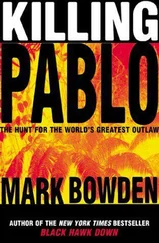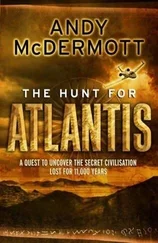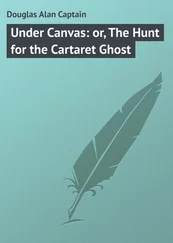For the next week, apart from Sunday, Hoban worked until midnight every day. On the Sunday he went in an hour later, working only a twelve-hour day, so he was home that night shortly after ten o’clock. Wednesday he took off and spent the day with Betty. He tried to be home by 10 p.m. if he could, but frequently it was impossible. Occasionally other crucial duties as the head of the city’s Criminal Investigation Department demanded his time which took him away from the murder inquiry, such as briefing the assistant chief constable, Donald Craig, or a conference with prosecution counsel in connection with other cases destined for trial. But Hoban, once these appointments were out of the way, kept himself and his officers hard at it. He made frequent appeals through the press and on local radio for people to come forward with information. He needed eyewitnesses who had seen Wilma, possibly with her killer.
As each detail came in, it was filed in the index system at the murder incident room. This in turn generated more inquiries: men friends, especially previous lovers, to be traced, interviewed and eliminated; vehicle sightings to be checked; follow-up interviews arising from house-to-house inquiries to be actioned, carried out, checked and then more follow-up actions sanctioned. A more detailed picture of Wilma’s movements on the night she died began to emerge slowly. She had left home at about 7.30, telling Sonje that the younger kids were not to get out of bed. She was ‘going to town again’ and would be back later. From 8.30 to 10.30 p.m. she had been in various city centre pubs. About 11.30 she was on her own at the Room at the Top nightclub, in the North Street/Sheepscar area of the city. The last positive sighting of her was about 1 a.m. when two officers in a patrol car spotted her in Meanwood Road. Other witnesses had seen her trying to hitch a lift by jumping out in front of cars, causing them to stop. She was roaring drunk. The laboratory report, while it showed no trace of semen in her body, did confirm she had consumed a hefty amount of alcohol, between twelve and fourteen measures of spirit. Reports came in of a lorry driver who had stopped near where Wilma was seen weaving her way down the road. Initially, there was some confusion, because another lorry was also seen to pull up and an eyewitness saw Wilma engaged in conversation with the driver.
An early search of her home produced an address book and so began the task of locating a large number of Wilma’s clients, though Hoban discreetly told the press they were searching for past ‘boyfriends’. He appealed for any not yet contacted to come forward. To label a victim a prostitute in this situation was unhelpful. Experience showed the public were somehow not surprised at what happened to call girls. Photographs and stories in the press about Wilma’s orphaned children were intended to create sympathy.
A week after Wilma was killed, Hoban had late-night roadblocks set up on the route she had taken when she left the Room at the Top. As a result, the lorry driver who stopped to talk to her revealed he didn’t pick her up in response to her plea for a lift home. She was totally drunk and clutching a white plastic container in which she was carrying curry and chips. He was heading for the M62 motorway, across the Pennines to Lancashire. A day or so later a car driver came forward to say he had seen Wilma getting into a ‘K’ registered, red or orange fastback saloon, looking similar to a Hillman Avenger. The driver was said to be coloured, possibly West Indian or African, aged about thirty-five, with a full face ‘and thin droopy moustache’. He was wearing a donkey jacket.
Six weeks after the murder, Hoban’s investigation was clearly floundering. All the normal checks had revealed nothing. The witness pointing them in the direction of the red or orange hatchback also mentioned an articulated lorry, which he said had been parked nearby. Despite inquiries at 483 haulage companies the police drew a blank. A total of twenty-nine former ‘boyfriends’ were interviewed and eliminated. They were still searching for the driver of the fastback car to come forward.
From December 1975 and into the New Year Hoban resumed more of his duties as the head of Leeds CID. There were important functions to attend – dinners held by the Law Society and the Junior Chamber of Commerce. He had court appearances in Birkenhead as a result of a famous incident at Headingley when a protest group dug up part of the cricket pitch and poured oil over the wicket, causing the Test match against Australia to be abandoned. The protesters were an unlikely group, trying to right an injustice in the case of George Davis, a London criminal they claimed had been wrongly imprisoned for a bank robbery. It was a high-profile case and Hoban was intimately involved.
He made his obligatory appearance at the chief constable’s pre-Christmas cocktail party for senior officers at the force headquarters in Wakefield. The chief, Ronald Gregory, had reason to be pleased with the way things were going in his administration. Two years previously the West Yorkshire Police Force had merged with the big city forces in Leeds and Bradford to create the West Yorkshire Metropolitan Police, one of the larger forces in the country, stretching across a wide area of the North of England. Gregory knew there would be tensions in bringing together the county coppers with the city forces. Leeds and Bradford had had autonomy previously, each with their own budget, chief constable and head of CID. Gregory hadn’t wanted too much disruption and hadn’t insisted on major changes in personnel. The cocktail party, at lunchtime on 22 December, was another getting-to-know-you session.
Hoban knew many of the senior detectives in the newly combined force. Before becoming the senior detective in Leeds, he had been deputy coordinator of No. 3 Regional Crime Squad, which covered a wide area of Northern England. As a detective superintendent he had close contact with his counterparts in the major towns and cities in the West Riding. The senior men were expected to get along with each other and make the amalgamation work. But the easy-going jollity of the cocktail party was in part an illusion. It still rankled the senior Leeds officers that the West Riding men were in the driving seat. As city detectives they were used to dealing with tough gangs and sophisticated crime. They believed the county boys lacked the hard experience needed to deal with ruthless criminals. ‘Donkey Wallopers’, they called them. However, on this occasion the chat was friendly. Most knew Hoban had an unsolved murder, but this was nothing new in their line of work. His reputation stood him in good stead. He was viewed as ‘a hard and occasionally ruthless man’ – ‘a decent bloke’ – ‘a fucking great detective’.
Renewed inquiries among prostitutes in the Chapeltown area over Christmas and the New Year of 1976 produced information about a fifty-year-old Irishman, known to drive a clapped-out Land-Rover, who frequented the area. It was a total red herring. Neither the Irishman, nor the driver of the vehicle thought to be an orange/red fastback car, was ever traced. (In retrospect, it seems highly likely that the driver of the fastback car was Peter Sutcliffe, who at the time drove a lime green K registered Ford Capri. It was some years before the Ripper squad learned that street lighting at night could often give witnesses a confusing picture of the colour of vehicles they were trying to describe. Sutcliffe had a swarthy appearance, which at night and at a distance could have led to him being confused for a light-coloured West Indian. And, of course, he had a droopy moustache.)
By the middle of January 1976 the McCann murder squad, numbering 137 officers, had worked 53,000 hours. Five thousand houses had been called at, these inquiries having generated most of the 3,300 separate index card references in the incident room. These in turn had spawned 2,880 separate actions or follow-ups. Five hundred and thirty-eight statements were taken. There were other clues which were never resolved. The vaginal swabs taken by the pathologist found no trace of semen, but there was a positive semen reaction on the back of Wilma’s trousers and pants. Forensic scientists at the Harrogate laboratory were unable to produce a blood group, most likely because the person who deposited this sample did not secrete his blood cells in his bodily fluids. (Possibly Sutcliffe masturbated over Wilma after he attacked her.) Keeping details of the injuries secret from the media, Hoban announced at one point that the killer seemed to have ‘very personal feelings towards Wilma’. He was clearly speculating elliptically that the frenzied nature of the attack and the physical presence of some sexual motive, i.e. the semen, perhaps made this a personal assault.
Читать дальше












